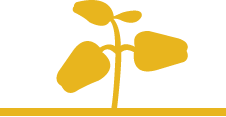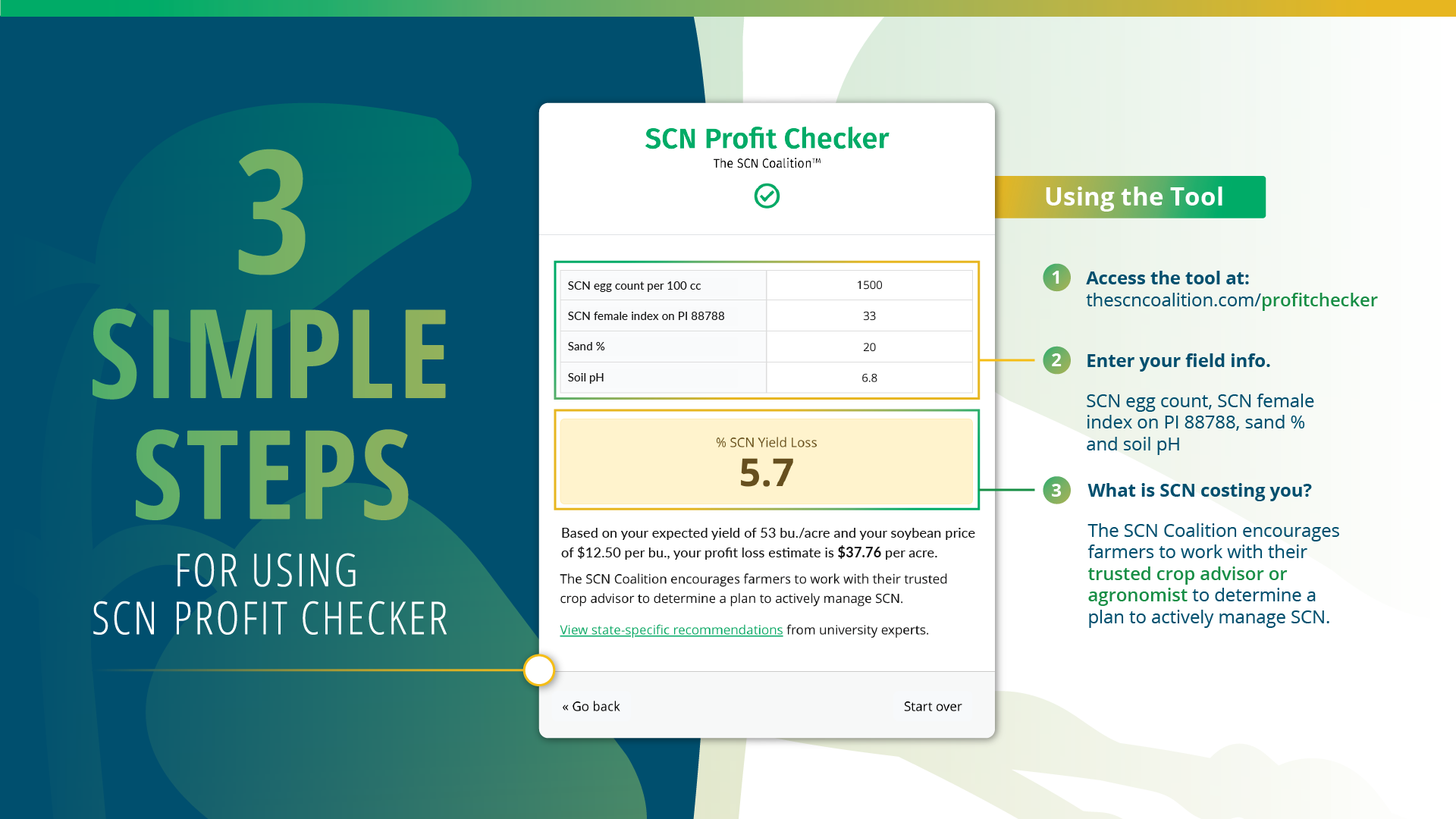
SCN Profit Checker
Brought to you by The SCN Coalition.
You may know SCN is lurking in your fields, but do you know how much it’s costing you? Our new SCN Profit Checker tool tells you. Powered by data collected from 25,000+ university research plots, this tool defines that economic toll, field by field, driving home the need for active SCN management.1
The extensive research behind the tool
Greg Tylka, Iowa State University nematologist, explains the detrimental upward trend in SCN reproduction on PI 88788 – used in more than 95% of resistant soybean varieties. Learn why it’s important for agronomists to work with farmers to determine their SCN risk and discover active SCN management tools.
Using the SCN Profit Checker Tool is Simple
Greg Tylka, Iowa State University nematologist, explains what information you need to use the SCN Profit Checker tool so you can get an estimate of the impact soybean cyst nematode is having in fields.
What is the SCN Female Index?
Greg Tylka, Iowa State University nematologist, says the soybean cyst nematode (SCN) female index is an indication of how well an SCN population can reproduce on SCN-resistant breeding lines like PI 88788. Learn why this is important information to know.
Better Farm Management with the SCN Profit Checker
Soybean cyst nematode (SCN) is the most damaging pathogen of the soybean crop in North America. Greg Tylka, Iowa State University nematologist, explains how using the SCN Profit Checker tool can help farmers estimate SCN’s per-field toll.
FAQ
Curious about the tool checklist? We answer your questions.


